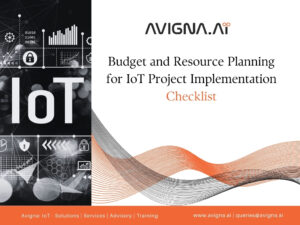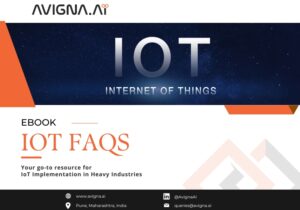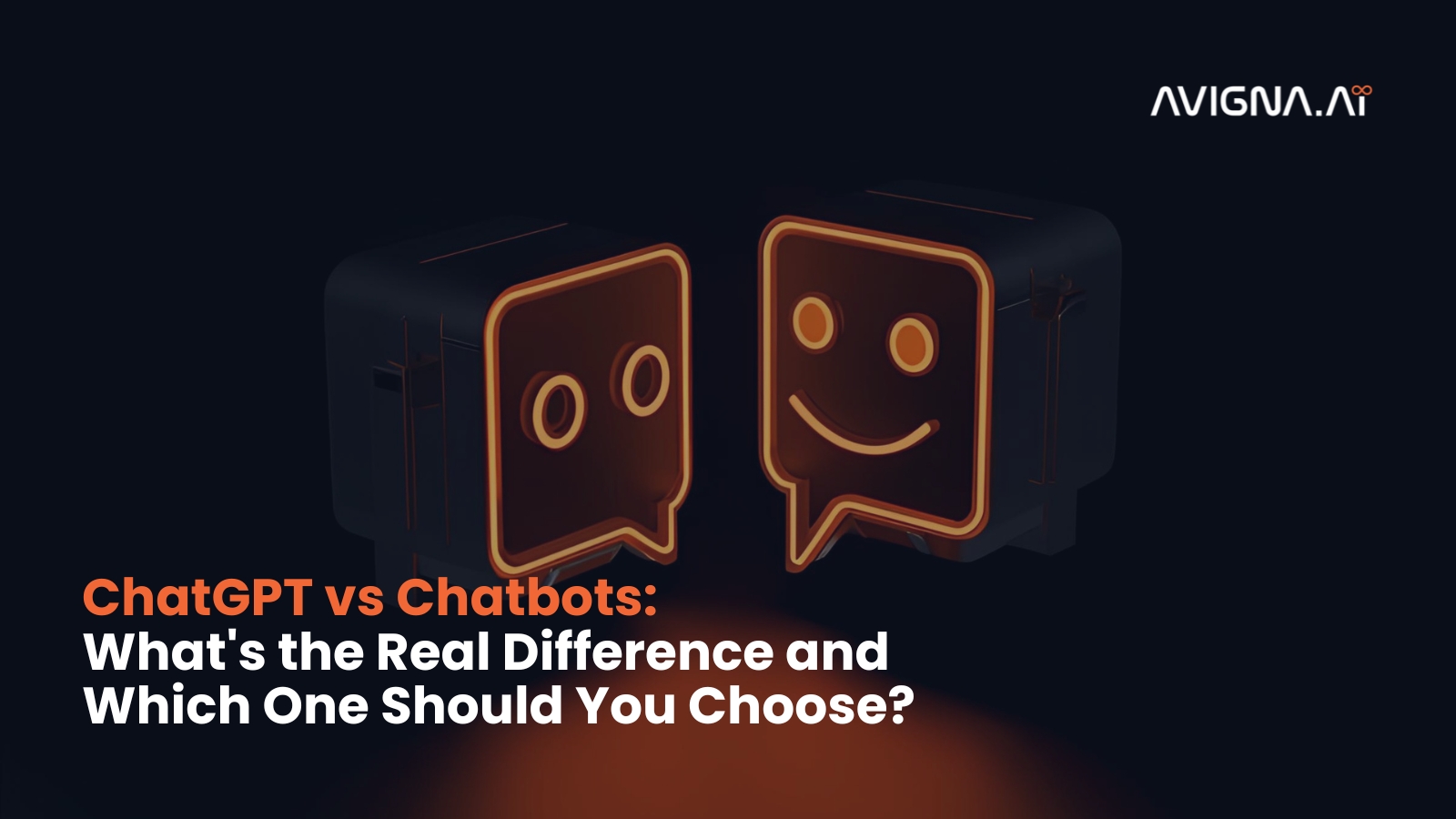The advancement of IoT technology is revolutionizing industrial automation, giving it a new headway. In this article, I will highlight some real-time examples to discuss the transformation of the industrial process by IoT in different fields. I will also explain the benefits that businesses realize from these applications. By the end, you will understand why IoT is considered the most significant game changer in industrial automation.
IoT Basics and How it Enables Industrial Transformation
Before exploring its applications, it is essential to understand what IoT refers to and how it can be used in industrial automation. IoT stands for the Internet of Things – a system linking physical objects embedded with sensors or software that enables them to connect, collect facts, and exchange information. Various types of gadgets, including sensors, robots, cars, etc., which are part of an assembly line, can be connected and automatically share valuable information without human intervention within one extensive system.
This interconnectivity lies at the heart of how IoT enables transformation. With data collection and analytics, industrial processes can now be optimized in real time. Manual checks can detect and address problems instantly. Machines can signal technicians to fix them whenever maintenance is required. Systems even adjust their settings depending on sensor data without human intervention.
Such an extent of interconnectedness opens new levels of controlling, seeing things, and understanding them. It tests our understanding of what can be achieved during production, supply chain management, or anything related.

Let us look at IoT-driven industrial automation in various sectors.
IoT in Manufacturing: Optimizing Production with Real-Time Insights
IoT substantially transformed manufacturing during the Industrial Revolution using instant data collection and analysis. One example is the aviation giant Airbus, which uses IoT in assembly lines.
Airbus equipped assembly tools with sensors to track 500 data points per second on fit, form, and function properties during production. Any deviations from tolerances are flagged in real time, allowing quality control technicians to take swift corrective actions before defects compound downstream. This has led to a 50% reduction in assembly errors while improving visibility.
Another example is automotive manufacturer Scania, which applies IoT and analytics in its foundries. Sensors monitor 1,500 parameters across melting furnaces and molding lines, detecting anomalies five times faster than before. This helps Scania improve yield, reducing scrap rates by 30%.
Evonik, a specialty chemicals producer, witnessed a 20% boost in productivity by tracking nitrogen levels, temperatures, and other metrics across 600 sensors at one plant. Automatic interventions optimize batch processes based on real-time analytics.
As these examples show, manufacturers are tapping into IoT’s benefits of real-time optimization, reduced waste, and continuous process improvements – helping drive new efficiencies across entire operations.
IoT in Supply Chain: Transforming Logistics with Connected Assets
The supply chain has seen fast adoption of IoT to optimize logistics through connected physical assets like vehicles, containers, and packages. For instance, Singapore-based PSA International deployed IoT trackers on port equipment, vehicles, and tools in one of the world’s busiest ports.
Over 33,000 assets are now monitored, with insights improving fleet utilization by 25%. Automatic usage reports also boosted maintenance based on actual operating hours rather than estimates. As a result, vehicle downtime fell by half.
Maersk, the world’s largest shipping company, equipped 45,000 refrigerated containers with temperature and location sensors. Real-time data ensures perishable cargo stays within safe ranges end-to-end – representing an estimated annual value of $4 billion saved on losses.
These developments are revolutionizing logistics visibility and control. With IoT, shippers gain real-time transparency into shipments like never before. Carriers improve asset efficiency while reducing dwell times. The net effect primes the supply chain for new velocities best serving today’s on-demand economies.
IoT in Energy: Transforming Utilities with Connected Infrastructure
Energy providers gained early IoT traction, modernizing infrastructure by connecting generation, transmission, and distribution assets. Take the case of U.K. power utility U.K. Power Networks. After installing smart meters for homes and businesses, 96% of its network became IoT-enabled.
Network controllers now have end-to-end visibility to detect and pinpoint faults within minutes – compared to hours before. Real-time analytics helps anticipate issues and proactively dispatch crews in advance. As a result, average response times are plunged from four hours to just thirty minutes.
Meanwhile, grid operator Litgrid installed thousands of sensors across Lithuania substations, power lines, and wind farms. IoT delivers real-time operational data, enabling automatic fault detection and immediate isolation of only affected segments. This “self-healing” ability has cut average outage times by 70%.
Such advancements are emboldening the clean energy transition, too. For renewable energy sources like wind and solar, whose output varies, IoT-based prediction and optimization help energy grids maintain load balance more seamlessly despite fluctuations.
IoT in Automotive: Enhancing Vehicle Performance with Connected Car Tech
The Connected Car Tech is poised to transform the automotive industry through industrial IoT applications. Cars have detectors to keep eyes on essential parts, gather operational metrics, and stream them back to producers.
No other example is better than self-driving Tesla cars when it comes to IoT in the automotive industry. They come with many sensors that monitor vehicle performance through the air, enabling engineers to diagnose problems or improve from far-off locations. Data collected helps enhance autopilot features.
For instance, BMW leverages IoT to gain real-time insights into its fleet’s performance under varying road conditions. Over-the-air updates push vehicle improvements, enhancing safety, emissions, and fuel efficiency. Drivers also benefit from infotainment, assisted driving features, and remote diagnostics.
Meanwhile, Ford implemented IoT to manage vehicle health remotely across its leasing divisions. Centralized telematics caught issues early, avoiding expensive repairs. The program delivered 25% gains in vehicle uptime and reduced maintenance visits by 35%.
IoT in Agriculture: Using Smart Farming Practices to Increase Crop Yields
Smart farming is used to describe the betterment of output and the sustainability of agriculture due to the incorporation of IoT-enabled technology. Remote sensors monitor soil moisture, nutrients, and other variables, while drones survey crop health.
This allows precise irrigation and fertilizing only where needed. In Romania, IoT boosted yields by 15-30% for a cooperative with automated greenhouse controls. Another farm operator saw US$30 savings per acre through optimal water and pesticide application guided by IoT data.
A sizeable Brazilian farm actively monitors soil conditions across thousands of hectares using IoT nodes. This aids in strategic decisions on rotating crops each season based on the generated land fertility maps.
Some innovators also work on IoT-enabled crop selection based on continuous environmental monitoring.
IoT in Healthcare: Advancing Patient Care with Connected Care Technology
IoT is streamlining healthcare through connected devices and systems. Remote patient monitoring solutions like glucose monitors relay vital signs to clinics, addressing issues virtually before hospitalization is required.
In Singapore, IoT detects and prevents 90% of fall risks for elderly patients, significantly reducing injuries. U.S. provider Athenahealth saw a 30% drop in readmissions by combining IoT with telehealth visits post-discharge.
New IoT devices under testing at academic hospitals would non-invasively monitor babies’ vital signals. This could reduce prematurity risks by closely tracking the development and catching issues that now go undetected.
As we advance, innovative solutions could generate real-time personalized therapies. Implanted medical devices may one day autonomously deliver tailored drug dosages or adjust pacemakers based on an individual’s lifestyle inputs sourced via IoT. Connected care undeniably enhances accessibility, quality, and affordability across the industry.
Key IoT Benefits Unlocking Industrial Automation with IoT
These are just some highlights of impactful industrial IoT applications transforming sectors from manufacturing to energy. Across examples, common threads include real-time process optimization, predictive maintenance, reduced waste, and improved operational efficiencies – unlocking new value through data-driven insights. Let’s dive deeper into the specific benefits businesses derive.
Increased Productivity
By definition, IoT-enabled industrial solutions deliver more productivity through optimized processes and assets. Sensors enable 24/7 monitoring for quick issue resolution, avoiding downtime. Real-time oversight ensures maximum equipment uptime while reducing defects and waste. This equates to higher overall equipment effectiveness.
Enhanced Quality
Quality improves because IoT delivers real-time validation and tracking capabilities. Parameters are continuously verified against set points during production. Deviations are flagged instantly, stopping quality issues before affecting entire batches or product lines. Predictive algorithms also help proactively address potential quality pitfalls.
Cost Savings
Through boosts in productivity and quality comes substantial cost savings. Less unplanned downtime, reduced waste and scrap, optimized maintenance, and lower expenses. Early quality issue detection cuts rework. Remote monitoring eliminates on-site quality checks. IoT applications achieve 10-30% reductions in operational costs on average.
Data-Driven Decision Making
Industrial IoT generates enormous volumes of new data – turning assets into vital information hubs. When analyzed through analytics and machine learning, these insights expose hidden patterns and root causes previously impossible to uncover. This fuels more evidence-based strategic and tactical choices across business units.
Enhanced Uptime
Predictive maintenance powers significant improvements in asset uptime through condition-based servicing. Sensors constantly track parameters indicative of wear and anomalies for individual assets. Issues are addressed before failures, keeping equipment running at peak capacity for longer. Many find predictive IoT extending machinery lifetimes by 25-50%.
Improved Sustainability
Because IoT boosts efficiency while lowering energy use across fleets, facilities, and systems, emission footprints get reduced substantially. Better still, its real-time controls help optimize newer sustainable processes and infrastructure more smoothly as industries decarbonize operations over the long run.
These prime returns delivered by industrial IoT help justify its adoption across sectors. As the digital and physical worlds intertwine more tightly, expect further innovations and transformations powering ever more excellent value from connected systems. IoT is shaping the future of industrial automation.
Challenges to Overcome for Industrial Automation with IoT
While IoT’s potential seems limitless, challenges remain in realizing its full scope – especially at scale across industrial ecosystems. Key among them:
Security
With proliferating internet-linked machines comes expanding cyber-attack surfaces. Sensitive data and critical systems passing through I.P. networks leave vulnerabilities. Robust access control, encryption, and constant upgrades are mandatory to outmaneuver evolving threats.
Integration
Retrofitting legacy environments means integrating IoT with systems of varying vintages across complex IT/OT boundaries. Ensuring seamless data interchange calls for simplifying cross-platform communication while avoiding disruptions. Careful change management is essential.
Skills
Few possess multi-disciplinary expertise across I.T., O.T., data science, and domain knowledge. Upskilling current workforces or sourcing hard-to-find talent presents challenges. Adaptable training programs are needed to nurture crucial next-generation competencies.
Interoperability
As solutions accumulate from different vendors, ensuring all components (devices, gateways, platforms, analytics, etc.) connect and interact seamlessly is paramount. Adopting open architectures and standards helps solve interoperability obstacles over the long run.
Return on Investment
Quantifying IoT’s payoffs requires solving analytics and measurable KPI definitions upfront. Proving ROI gets tougher as benefits materialize across departments instead of in isolation. Demonstrating returns holistically is vital for scaling buy-in and justifying larger IoT budgets over time.
Solutions to the Challenges
With diligence around these fronts, industrial facilities laying the groundwork today will be far better equipped to overcome challenges down the line and continuously extract more value from their industrial IoT applications. Many are already taking proactive steps such as:
- Establish comprehensive IoT security policies along with monitoring devices and networks. Regular vulnerability testing and patching keep defenses robust.
- Creating enterprise data platforms integrating data streams from varied sources in standardized formats. Application programming interfaces (APIs) facilitate interoperability.
- Partnering with skill-aligned systems integrators for consulting, specialized services, and training programs to augment in-house talent.
- Clearly define measurable KPIs aligned with strategic goals when launching IoT projects. This helps quantify impacts transparently across variables like OEE, yield, MTBF, and operating costs.
- Consulting industry consortiums to understand and adopt emerging open architectures, reference models, frameworks, and standards guiding evolutions in IIoT technologies.
- Piloting use cases in controlled environments before scaling to gain practical learnings. This also builds confidence in investments.
Continued Advancements in IIoT
With dedicated focus, steady progress is being made towards overcoming industrial IoT’s complex deployment and integration hurdles. Meanwhile, technological advancements continue to open new frontiers of possibility. Here are some emerging developments set to propel the following stages of IIoT-driven transformation:
Edge and fog computing: Driving processing nearer IoT devices at network edges using edge gateways. This solves latency issues while keeping core networks uncongested.
Predictive/prescriptive analytics: Machine learning advances lift analytics beyond detecting anomalies into predicting failures and even self-optimizing based on prescribed goals.
5G wireless: 5G’s high speeds and low latency unlock limitless wireless sensor connectivity for assets anywhere—these fuel applications require real-time control and actuation.
Digital twins: Digital replicas of physical factories and products virtually validate changes before implementation, reducing risks of failures or disruptions.
Contextual applications: AI-infused apps react intelligently based on dynamic situational conditions, empowering truly autonomous industrial operations.
Advanced human-machine interfaces: Immersive visualizations and natural language commands enhance worker experience with IoT-generated insights.
Build the Future with Avigna
Indeed, we are at the cusp of IoT technology revolutionizing industrial automation with evermore powerful technologies. While the journey won’t be linear, early innovators laying robust IoT foundations will be best placed to reap the full benefits in the years ahead. The future of intelligent, connected manufacturing and supply networks is here.
At Avigna, we are committed to empowering businesses with the power of IoT. Our customers drive innovations built on our award-winning IoT platform Avigna Cube. We offer IoT Consultation, Advisory and Implementation Services to be a part of your innovation. Contact us to build a connected future.






